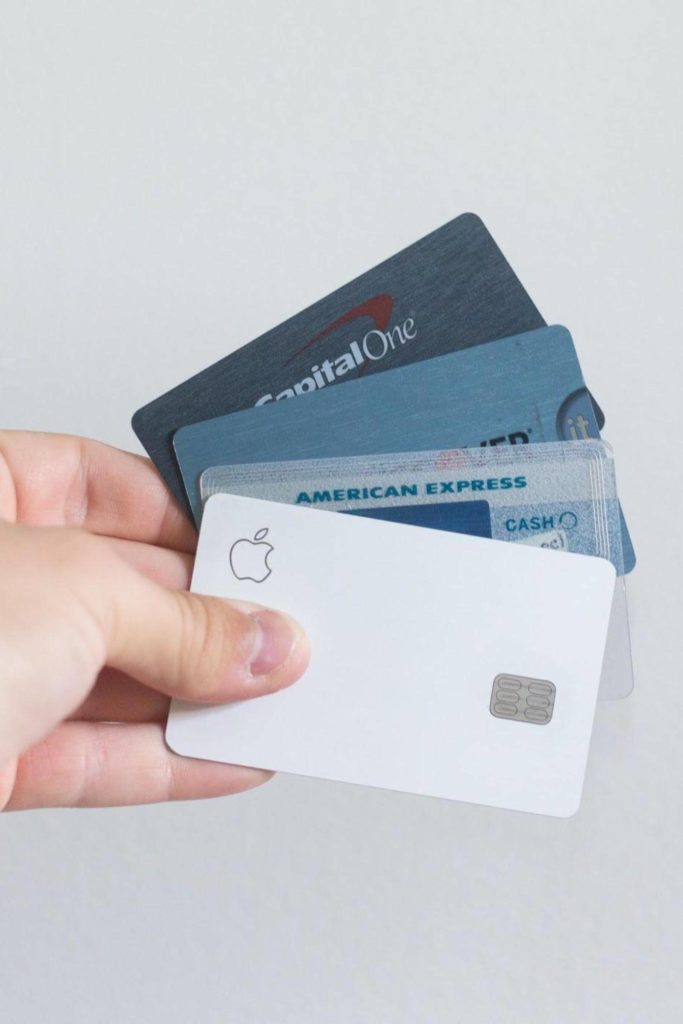Now that we’ve gone through a list of the seven best budgeting methods and also what I’ve used from each method to create my own budget, it’s time to get our hands dirty!
Today, I want to teach you how to create a budget that works for you.
So why do we need to do this? In short, because a budget that works for me isn’t going to look the same as a budget that works for you. I’ve found this to be true even when two different people are using what seems to be the same budgeting method.
Why is this? Because no two people are alike and our budgets should reflect that.
AtypicalFinance recognizes the need for everyone to “do different and be different” because everyone is different.
I want to help you create a budget that is uniquely you.
So let’s get started!
How To Create Your Own Budget
As I mentioned in my last post, creating your own budget is going to be one of the best things you can do for you and your money. I’m not going to lie to you, though. There are some things about a budget that are not fun to do at first, but they have to be done.
In fact, the first two steps are necessary for literally every budget even if you do the “No Budget” Budget. Starting with Step three, though, we’ll be working to make the budget that looks a little more like you.
So grab a notebook, electronic or paper, and let’s get started.
Step 1: Figure Out Your Lowest Possible Income (LPI)
 One of the basics in any budget—you have to know what sort of income you have. For those who are on a salary, this will be a little simpler. For those of you that are hourly, or at a job such as a restaurant server, it’ll take a little more math to figure out.
One of the basics in any budget—you have to know what sort of income you have. For those who are on a salary, this will be a little simpler. For those of you that are hourly, or at a job such as a restaurant server, it’ll take a little more math to figure out.
I like to call this your Lowest Possible Income (LPI) because we will be using this as a base. It’s always better to underestimate your income so you have a greater likelihood of meeting all of your bills. Then, if you have more, you can put it where you see fit.
Let’s tackle irregular income first.
Lowest Possible Income on an Irregular Income
In order to figure out your LPI (lowest possible income) when you are not getting paid the same amount each check, you’ll want to access your paycheck amounts from the past two years if possible. You’ll want to have the most accurate LPI that you can, and two years worth of pay will help.
A year will also do nicely if you aren’t able to access two years. The goal is to figure out your lowest month of income from the past year or two.
One more note. Over the past year or two, you may have gotten a raise or increase in income, possibly once or twice (hopefully!). That won’t matter for this purpose since you’ll be underestimating your income anyway. The lower income toward the start of your one to two year time period will help with understating what your LPI will be.
Once you have all of those amounts, add up each month’s total income and determine the lowest three. Next, add the lowest three together and then divide them by three to get the average.
So if you add up your lowest three monthly incomes and come up with $8,800, that amount divided by three would equal $2,933 for your LPI.
Lowest Possible Income on a Salary
Now, depending on if you are paid twice a month or bi-weekly, your lowest income will differ from someone with the same salary as you.
I briefly mentioned this above, but if you are paid bi-weekly—or 26 times a year—there will be two months each year where you will have an extra paycheck for the month. This means your lowest possible income for the month will be the equivalent of a two paycheck month rather than a month with three paychecks since it’s not an every month occurrence.
If you are paid twice a month, or 24 times a year, every month will have two paychecks. Simply add those two paychecks to get your lowest possible income. If this is you, know that budgeters across the world are envious of how little math you have to do to in order budget.
Things NOT to Include
Some budgeting methods have you include in your monthly income things like 401K and other retirement savings tools that are coming straight out of your paycheck. I recommend not doing this. The reason for this is because it’s coming straight out of your check. You are never going to see it in your checking account so why include it in your monthly income?
Here’s a short list of categories not to include. Some of this may be self-explanatory:
- Anything that comes straight out of your paycheck except for extra savings (401K, Medical premiums, etc.)
- Any income that isn’t permanent (non-regular side hustles, credit card cash rewards, any other income that isn’t regular)
After you figure out what your LPI will be, it’s time to move on to step 2!
Step 2: Figure Out Your Expenses and How They Relate to Your Income
 Ah ha! The second staple of any budget—it’s time to figure out your expenses!
Ah ha! The second staple of any budget—it’s time to figure out your expenses!
Gather all of your bills that you have to pay every month. This will literally be every bill you are committed to paying every month. Some examples would be your phone bill, Netflix, rent or mortgage, electric bill, etc.
Then, create a list of everything that you spend money on apart from your bills. This includes eating out, clothing, groceries, gas, etc. Anything that you can think of that you may want to budget for.
Organization Step One
Once you have all of that together, we’re going to organize these into a couple of different categories to make it easier to add up.
The first category will be every bill you have that stays the same month to month. Some examples would be your mortgage or rent, car payments or insurance premiums, credit card payments (minimums only), your cable bill, or your cell phone bill. If you pay the exact same amount each month, put it in this category along with the amount you pay monthly next to each bill.
The second category is all of your variable expenses. So these are things that may not be the same month to month, such as your groceries, auto fuel, clothing or personal expenses. If it was a different amount than it was the past month (and they didn’t just raise your rate on something), put it in this category.
Similar to if you have a variable income, figure out an average of how much you spent in these categories over the past 6 or so months. It doesn’t have to be a year or two like when figuring out your income. The idea is to just give yourself an idea of average by including high spend months such as holiday time, and low spend months like at the beginning of the school year.
Once you have an average, I recommend you overestimate a little bit to make sure that you are covering your expenses. Put that overestimated average down next to the name of the bill like you did for your fixed expenses.
Organization Step Two
After that step, you should have a monthly amount next to each of your bills. We no longer need them categorized into fixed expenses and variable expenses. Instead, in order to lay the groundwork for any changes that need to be made later, we’re going to organize your expenses into “Needs” and “Wants.”
Categorizing these should be pretty simple, but there may be things that you consider a need that someone else would consider a want. That’s definitely okay since your budget is supposed to reflect who you are. Things like your housing and food costs that are necessary for you to live you’ll probably want to put in the “Needs” category. Things like going out to eat, or to a movie, or other categories you could cut out easily you’ll want to put as a want.
Go through your expenses and determine what your wants are and what your needs are. You can view my post on what my new budget looks like to see what I have categorized where.
The Math Part
Once you have all of the things you spend money on organized in “Needs” and “Wants,” you’re going to add up totals. In order to make it easier—and the entire reason we put them in separate categories—you’re going to have three separate totals. One total will be for your needs, one for your wants, and one for both of those put together.
After you’re done figuring out everything that you spend money on right now, it’s time to figure out how the money you spend relates to your income. This one is quite simple.
Take your added up income and subtract the total expenses. How much is leftover? Is it more than your income? Less than? Significantly less than? Significantly more than?
This will help you figure out if you are already spending more than you earn. But don’t make any adjustments quite yet. We’ve got some work to do first.
Step 3: Figure Out What You Value
 Here comes the fun part! This will take some effort but I promise it’ll be worth it and rewarding—and possibly bring back some fond memories!
Here comes the fun part! This will take some effort but I promise it’ll be worth it and rewarding—and possibly bring back some fond memories!
Let’s figure out what you value!
Your values are the thoughts and beliefs that define how you live your life, spend your time, and spend your money.
For example, in my own life, some of my fondest memories are of trips to Disney World. I love going to Disney World. It gives me some great experiences, time to enjoy with my family and friends, and memories that will literally last a lifetime. My best friend and I still talk about how awesome our first trip was together—and that was back in 2012!
Do you have vacations you like to go on? Is spending time with your family and friends important to you? Maybe it’s being able to go out to an expensive meal with your significant other once every month or two.
Figure out what’s important to you! Find out what you value. I will not tell you to never spend money on your $5 Starbucks if that brings you real joy and value—especially since I’m sitting here drinking a Starbucks drink as I write this. Part of creating a budget that you’ll stick with is using it to fulfill your life by doing the things you enjoy.
A great way to save money is by not doing what you don’t enjoy.
Let’s look at some practical ways that you can use to help you figure out what you value.
Ask Three Questions
The first step to figuring out what you value is to ask yourself three questions. You may want a piece of paper for these. The questions are:
- What is most important in my life? – Is your faith at the top of your list? Maybe your family is at the top. It could be that you have a couple tied for the top spot. Think really hard about this one.
- What do I enjoy spending my money on? – Write down things that make you happy to spend money on them. For instance, I enjoy spending money on really good meals like a steak and lobster dinner, usually within the company of others. And I’m not talking about a small rush of happiness that fizzles out. This happiness lasts, partly because of the food, and partly because of the company. Is there anything you enjoy spend money on that has a lasting effect?
- What do I enjoy spending my time on? – What do you really enjoy doing with your time? Do you enjoy working out at a world class gym? How about sitting in bed at night getting lost in a book? I enjoy spending time watching old movies so I allow myself the luxury of spending money on them.
Time and money are two completely different beasts so it’s important to answer both questions.
 Dig a Little Deeper
Dig a Little Deeper
The next step is to dig deeper into your answers. So what does that mean exactly? In a sentence, be careful of what you think you may enjoy.
If you’ve been following me for any length of time, you know that a few years back I was in a really bad situation where I hated my job. And I do not use that word loosely. I spent a lot of money on video games in this period, even though I didn’t have time to play them. When I did have time to play them, I would retreat into whatever video game world I was inhabiting and forget about my problems.
Now, as I’ve said before, I thought that I enjoyed playing and buying video games but it was really just masking the unhappiness of my job. When I got out of that job, video games were no longer a huge desire in my life. Sure I still enjoy playing them, but it’s not something I value enough to spend money on. I literally buy maybe two games a year…sometimes none.
Dig deep enough to determine if something really makes you happy. Don’t just look at it on a surface level. It could be masking an underlying problem like it was for me.
What really satisfies you? Something that really satisfies me is unplugging for a little bit. I try and stay off social media more often than not unless I’m interacting with my readers. It used to be fun to see all of the millions of updates from my Facebook friends until I realized two things—I spent way too much time on it, and all of the information was overloading and draining me.
Now it’s easier for me to concentrate on more important things in my life. It’s not that I think social media is a bad thing. It’s just not something that I value in my own life.
Write Down and Follow Your Values
Now that you’ve dug deep into who you are, what you enjoy, and why, it’s time to put these down somewhere where you will see them often and remember them. Remind yourself of what you value often and it will be easier to follow.
It’s the same concept as using reminders to keep yourself motivated to pay off debt. I find visual reminders to be the best but it can also be text bases. Here are some reminder ideas to get you started:
- Set up a reminder on your phone to go off at the beginning of every week so you can review your values
- Create a desktop background for your computer using PowerPoint, Photoshop, or something similar. Design it so it reflects you. Every time you turn your computer on you’ll see your values.
- Create a one-sheet document using Microsoft Word or Google Docs that you can print out and hang in your office/cubicle at work, or in your home office.
- Write them down on a whiteboard in your office or cubicle
- Put post-it notes on the bathroom mirror
The more you’re reminded of your values, the faster you’ll start to live them. It gets ingrained in you when you do this instead of just something you’re reading every so often.
As a bonus, figuring out your values will not just have a positive effect on your budget. Use your values to inform every aspect of your life. It will determine what you spend your time and money on, what type of jobs you go for, if you want to start your own business or not, and even determine aspects of your relationships.
Side Notes About Your Values
Something to consider and potentially watch out for when you are going through the process of finding what you value is that these will change as you enter different stages in your life. Don’t be alarmed by this. It’s only natural for you to value different things as you get older or grow as a person.
This is another great reason for reviewing your values often as I mentioned above. If you come across a value that for the past few weeks has left you kind of “meh” when reading it, it may be time to re-examine that value.
I say that this may be something to watch out for because something may change. I don’t want you to think you still value something because you used to enjoy doing it. Values change, and that’s ok.
One last recommendation I have is to not go crazy with the number of values you write down. Ideally, after searching yourself, you’ll have no more than three to five core values. Now, this doesn’t mean that you’ll have to limit the number of spending categories to five or less. It simply means that you are going to use a maximum of three to five values to guide your spending and saving decisions.
Values Make Your Budget Personal
Values are exactly the reason why two people using the same budgeting method can have very different budgets. What you value will determine what you spend your money on and how much you spend.
Keep your values handy because they are going to be used to guide you throughout the next steps.
Step 4: Cut Expenses that Don’t Match Your Values
 For this one, you’ll want your list of expenses side by side with your values. The next step is to cut the things out of your budget that don’t align with the core values that you just came up with in step three. Get the chainsaw ready!
For this one, you’ll want your list of expenses side by side with your values. The next step is to cut the things out of your budget that don’t align with the core values that you just came up with in step three. Get the chainsaw ready!
The idea of this is to lift some of the burden off your budget by cutting some stuff out. If you’ve been purchasing things trying to keep up with the Joneses, just to feel good, or because it feels like that’s what you’re “supposed to do,” cutting out the expenses that don’t align with your values will do you a world of good. When you realize you don’t have to spend money on the things that don’t matter to you, you’ll feel as if a little weight has been taken off of your shoulders.
Go through your expenses one by one and see if they line up with your values. See if they line up with who you are.
“Wants” First
Start with your wants because those are the easiest to cut back on. Your needs will be a little bit more difficult. Let’s face it. Even if you don’t value having a car, depending on where you live, you may need one. We’ll get to options for needs in a few minutes.
To give you an example from my own life, we’ll use my Disney World Trips in the “wants” category—although at this point, maybe they should be a need! I’ve given myself permission (using my values) to spend money on vacations to Disney World.
Searching myself, Disney World trips align with two of my core values. The two values it aligns with are “Quality Time with Family” and “Work Hard, Play Hard.”
Quality time is an easy one. If Disney trips continue to provide my family and me a means to really enjoy ourselves, spend quality time together, and make memories that last a lifetime, we’ll keep going on them.
For “Work Hard, Play Hard,” this gives me the motivation that I need to work really hard while not on vacation. Outside of the fact that I have a four-year-old and seven-year-old, I also work hard at my job, on my marriage, on myself, and on this blog. When I commit to something I tend to go all in, for better or worse. Disney World trips give me a much-needed respite from my everyday. It aligns perfectly with both values.
Some things I’ve cut out that don’t quite align with my values now are every-two-year phone upgrades, having the latest iPad, and buying every video game that looks like fun.
Do your wants align with your values? Go through your wants one by one and see if they fit in with what your values are. Cut them out if they don’t.
Adjusting Your “Needs”
Now that you’ve gone through your wants, it’s time to adjust your needs to match your values. You might be saying, “Uh, Tim? Needs are needs. You can’t really do much with those.” Ahem…yes we can.
I admit. Adjusting your needs is going to be difficult. For some of you, it may be extremely difficult, but it can be done.
Now if you’re anything like me, you’ve got things under needs like your mortgage/rent, cell phone bill, car insurance or loan payments, etc. There are a lot of needs that can be adjusted with a little bit of work. That’s why I like referring to it as “adjusting” your needs. It’s hard to cut a need out.
Take your mortgage as an example. Is having a nice home something you value or do you value something like travel where you aren’t home as much? Is your home too big for you? You may have the opportunity to downsize and cut out a good portion of your monthly payments. Downsizing from a $300,000 home to a $200,000 home will save you about $477 a month and almost $172,000 over the life of the loan using the same interest rate.
This same logic can be applied to your car. If you genuinely enjoy driving and drive often and a half hour or hour from your home, then you may be able to swing having a nicer car and a little bit higher of a payment. Driving may align with a value of yours. Otherwise, you can trade in your shiny new car for an older used vehicle and save a ton of money.
For me, I drive to the train station and back every day. Everywhere I drive outside on a frequent basis is usually within about 15 to 20 minutes from my house. I don’t need a nice new car for that. My seven-and-a-half-year-old Chevy Malibu will work just fine for me.
If you could care less about driving or your car—or if you live in an urban environment—you may be completely fine with either an old beater for $1,500 or not having a car at all.
Other “Need” Adjustments
Your other needs can be shopped around as well. Both home/renters insurance and car insurance can be shopped around in order to find some savings each month. I recommend comparing your coverage apples to apples so you are getting the same coverage.
Your cell phone bill can also be lowered. Do you need 20 gigabytes of data just for yourself? Maybe one of your values is to have real conversations with people negating the need for Facebook at your fingertips. This could cut down on the amount of data you need. You also have the option to switch to a much cheaper prepaid plan to cut down your monthly payments.
To save money on utilities there are a number of changes you can make. To save on electric, you can make sure all the lights are off, turn off and unplug electronics that you don’t use very often, or open the windows instead of running the air conditioning.
If you have a natural gas furnace, you can turn it a couple of degrees cooler, put on more clothes and add a blanket while you’re sleeping. You can also buy window insulation kits to help keep the house warmer with less energy. The same can be applied to electric heating.
Learning to cut costs in these areas of your budget will also free up more money for you to spend on what you value. There are plenty of options for you to be able to save money. Choose which ones work the best for you.
Lastly, don’t be alarmed if not all of your expenses align with your values. If you have an expense you really want to omit but can’t, keep in mind that some of your bills or budgets may help you to achieve what you value rather than directly align with it.
For example, since I don’t care about having the best car, I think it’d be cool to not have a car. But the car allows me to have the freedom to go where I want or need to go so it aligns with some of my values. I’ll keep it around for that.
Add Them All Up
Now that you’ve adjusted your wants and needs to better align with your values, it’s time to add up your expenses once again. Do the same thing as before with having two separate totals for needs and wants and then a third total adding your needs and wants together.
Now remember, this whole step focused on cutting out the expenses that don’t align with your values. Your new totals should be lower than what you had before. Add your totals up and write them down.
If you started out with your expenses being greater than your income, hopefully, this took care of that problem. If your expenses are still greater than your income, do this step again using only your top one or two core values. That will allow you to cut out some additional expenses until you are making more money.
Keep this total around for the next step as you will be using your surplus income to figure out where to put your money.
Onward!
Step 5: Spending and Saving Your Way
 Now it’s time for the really fun part. This is the part where you get to give yourself a license to spend money!
Now it’s time for the really fun part. This is the part where you get to give yourself a license to spend money!
After completing the previous step, almost all of your expenses should be aligned with one or more of your core values. Now is your chance to switch around some of the money you saved so you can better enjoy the things that you value and save up some money to do the larger things you value.
Decide How Much to Spend – Your Needs
First things first, we need to take care of our needs.
Yes, believe it or not, your values matter with your needs too. Where you live, the type of home you live in, your groceries, your fuel, all of these can reflect who you are and what you value so it’s important to be intentional in your spending.
So what do you consider for this?
Well, let’s use groceries as an example. For some of you, eating clean and organic is a high priority. Others of you won’t mind eating things that are all natural rather than full organic as long as you know where your food is sourced from. Then, there will be some who only care about the price of their food and not spending too much on groceries. This all is up to you and will determine how much you let yourself spend.
For those who want to eat completely organic, it’ll cost more to do that. You’ll want to leave yourself more money for groceries. If eating organic is not one of your values, you won’t be spending as much.
Where you live and what type of home you live in can also be highly tied to what you value. Do you want to move away or is staying near your family important? It is cheaper to live in certain areas than it is others.
Maybe you dream of living downtown in a big urban environment. If this is something you value, chances are you won’t care what kind of car you drive or you may not even want to own a car. If that’s the case, you’ll be able to spend more on housing downtown and won’t need to spend money on your own car or fuel.
There are some of you that value decluttering enough to downsize to a tiny house. Obviously, if your home has a small footprint, your mortgage, utilities, and what you buy for your home will all be fairly minimal in cost.
When you determine how much you should be spending on each “need” category, write (type) the dollar amount next to that category.
Add it All Up – Your Needs
Remember, this is a budget designed to work for you and reflect you. There are no right or wrong ways to do this as long as you are not spending more than you make.
And to determine that, we need to add it all up! Take the dollar amounts that you’ve determined for each category and add them all together.
This gives you your total amount that you should be spending on your needs. Captain Obvious would be proud of that line.
Decide How Much to Save
An important thing to note here is that for almost all of you (read: 99.9% of you), there will be at least one value that will require you to save some money. If it’s a rare case of literally having nothing to save for, I recommend creating a category or budget for saving anyway. Trust me on that. You’ll want to retire some day.
To give you an example from my own life, one of my values is freedom of time. In order to get true freedom of time, I first will need to get financial freedom. That means I have to save money. Saving money directly aligns with my value of having freedom of time.
How much you should be saving is going to be unique to your life and situation. It should reflect your values and what you want for your future. I recommend using some sort of retirement calculator to give yourself a rough idea of how much you want to save and when you want to retire.
Keep in mind that using a retirement calculator is not going to be a perfect option. It’s really hard to predict the future, but this will be a heck of a lot better than trying to just guess.
Use your unique retirement number as well as some of the bigger things you want to do according to your values to determine how much of your income you need to save. Add them up to get how much you need to be saving based off of your values. If you want to do some of these things sooner, you’ll have to save more. If you set a timetable for 20 years down the line, then you may be safe to not save as much.
A Quick Example
Here’s an idea of what deciding how much to save looks like. Let’s say that I determine that I need to save 10% of my $80,000 a year income to retire wealthy at the age of 60. I also determine that two Disney trips a year would be valuable to me and my family.
I decide I want to take that 10% off my pretax income so I am putting away $8,000 a year in my 401K (with a company match too!). In order to finance two Disney trips a year, I’ll need another $6,000 averaging $3,000 each trip.
So each year I would need to save at least $14,000.
Now obviously this scenario may not be realistic on that income, but it’s just to give you an idea of how you would determine your savings.
Add up yours to see how much you need to be saving.
Giving and Paying Off Debt
There is probably a good portion of you that really treasure giving. If this is something you value then it’s important to decide how much you want to give of your money. It could be a percentage or a dollar amount, whichever you prefer.
As I mentioned, financial freedom is one of my values. For that, I want to pay off my debt. So I’ve chosen a good portion of my extra money to be used for debt. This could be the same for you. You may want to have a small $1,000 emergency fund and then use all of your extra money to pay off what you owe others. Alternatively, you may want a three to six month emergency fund before you even consider paying off your debt.
The choice is entirely up to you.
Both giving and debt payoff is a choice in how you spend your money. I look at spending as any money going out of your main checking account. This includes saving for your future, giving money to those in need, or paying off your debt so you can live freely.
Lastly, giving and debt payoff you may consider a need or a want. Put these in whichever category you see fit.
Decide How Much to Spend – Your Wants
Now that you’ve decided how much you want to save to reach your future goals and values, it’s time to decide how much you want to spend!
After Steps 3 and 4, you should be left with pretty much only wants that align closely with your values. Spending money on things you don’t value is a literal waste of money. Proof of that is the 15-20 video games I own but have never played.
Line up your values next to your list of expenses labeled as “Wants” for this portion. It would also be a good idea to know exactly how much total money you have to spend on yourself. Take your total monthly income and subtract your needs and the amount you’re saving from it. This will give you how much you have total to spend on wants.
Now, take a look at your current wants. What do you see? Are all of your values covered? Are there certain values that aren’t as important that you should cut back on in order to fund the more important ones?
Don’t be afraid to take your time with this. You want to make sure all of your values are covered and in the priority that’s right for you. What you spend your money on has a direct influence on how well you are able to stick with your newly created budget. The goal is to cover your expenses, cover your retirement and future goals, and cover your current and future wants so you are not feeling like your budget is restricting you.
Your budget should be freeing. It keeps you from spending money on what you don’t value in order to live more comfortably spending money on what you do value.
Place a dollar amount next to each “want” category.
Add it All Up – Your Wants
After you figure out all of that, add up all of your wants and then subtract the total amount of money you have to spend on wants. If all of your values are covered in your wants and you’re still under what you are able to spend, then you’re golden. Do what you want with the extra money.
If your “Wants” dollar amount is greater than what you are able to spend after your needs and savings are taken care of, then go over your wants again and see what you can cut back on.
That’s really all there is to it. This will largely depend on what you value and what you want to spend money on so there isn’t a lot of instruction to be given. Again, you’ll just want to make sure that you are not spending more on your wants than you are able to.
Step 6: Figure Out What to Do with the Extra Money
 So let me start off by saying congratulations for getting this far!
So let me start off by saying congratulations for getting this far!
I know it’s been a lot of work so far, but I can promise you that it’s worth it. Why? Because you now have yourself a living, breathing budget!
The cool thing about this particular budget you have in front of you is that you created it. It’s based on your values and what you want out of your life and your money. This should make it a whole lot easier to stick with.
It’s time to do one final math check to make sure that you are not spending more than you are bringing in—and by spending I am including spending on your future, i.e. saving.
Add up all of your totals, your needs, savings, and wants, and write down the final total dollar amount. Now, take that dollar amount and subtract it from your income.
Since we’ve cut out a lot of your expenses that don’t line up with your values, you should come up with a positive number. Again, if you come up with a negative number, I recommend prioritizing your highest value and basing your budget off of that. You’ll need to quickly go back and amend some of your expenses.
Hopefully, you won’t need to do this since we did this initially in the last section with your “wants.”
If your number is still positive, then you are golden!
What Should I Do with Extra Money?
One of the best parts of having a budget is the potential for extra money. In addition to the money that you are saving every month (see the first part of step 5), you may have some extra money lying around after adding up all of your expenses.
So what do you do with it?
In short, whatever you want.
You could invest more, build up your emergency fund, or distribute the extra money across some of your wants categories. This is your show. Use that extra money to further align with your values. If you couldn’t include a value due to income constraints at first, go back and see if you can add it now.
If you’re like me, I like to have a little cushion each month so I use my little bit of extra money for that. You could also use your extra money to pay off your debt faster.
I will say that that little bit of extra money can go a long way toward saving for your future goals. The decision is up to you, but saving more money is always a good choice. It can help you reach your future goals and values much faster.
You can also use future extra money (i.e. raises) to save for your future as well. When you are working with a budget that you’ve created and aligned with your values, the risk of lifestyle inflation is lessened due to not needing as much. If you are aligning future raises and extra money with your values, you won’t be nearly as tempted to go out and buy a new car or new home or other things that may inflate your lifestyle. You’ll be free to spend or save on your values.
Step 7: Tweak As Needed
 I referred to your budget as living and breathing. I don’t use those terms lightly. Not only is it living and breathing because it reflects you and what our goals are, but it’s also because it may change as you do.
I referred to your budget as living and breathing. I don’t use those terms lightly. Not only is it living and breathing because it reflects you and what our goals are, but it’s also because it may change as you do.
As you grow older or situations in life change, your values will reflect that. We’ve all heard of stories where something happens in someone’s life, such as losing a loved one or winning a battle with cancer, that drastically changes their outlook on life and what matters to them.
The changes in your life may not (hopefully won’t) be so drastic, but nonetheless, you can expect changes in your values. It’s important to periodically go over your budget. I can’t give you a recommended timeframe because it will vary for each person. I guarantee it won’t be less than every three months. Three months gives you enough time to try a budget and see if any changes need to be made.
The best advice I can give you is to really get to know yourself and realize when you have a change in value. If something stops being enjoyable, it may be time to re-evaluate your expenses.
That’s one of the best parts of creating a budget that works for you. It will change and grow with you. You won’t have to completely switch styles in order to accommodate your changing values.
Congratulations!
 You’ve successfully completed your very own budget!
You’ve successfully completed your very own budget!
This budget will work for you because it is based on who you are and what you value. Gone are the days where you have to feel bad about spending money. You are spending money on things that matter to you and no longer spending on things that don’t.
As I mentioned, your budget should give you a feeling of freedom either in knowing that you won’t have regrets spending money on what you value, or knowing that your budget is helping you get to that point (or both!).
Thanks for taking the time to read through this and try it out. I hope it’s insanely valuable to you.
If you find these instructions valuable, please share with your friends. Also, I’d love to hear how your budget is going for you after following these instructions. Comment below!



















